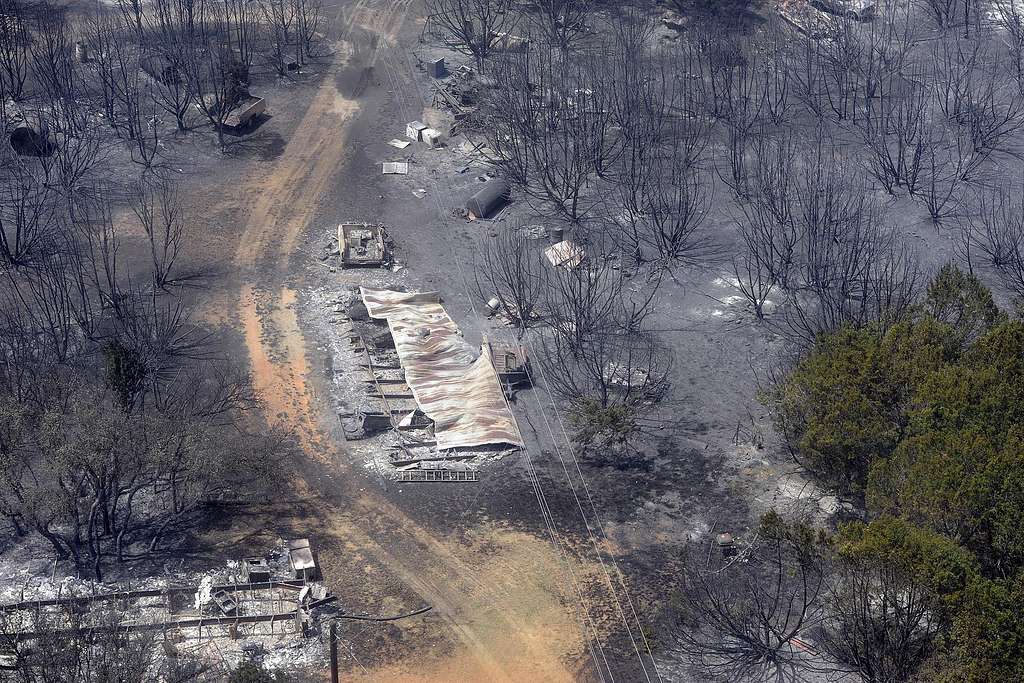Climate change escalates wildfires globally, increasing their frequency, intensity, and duration. The northern hemisphere experienced a summer of climate-driven extremes. Canada’s record-breaking wildfire season mirrors Australia’s Black Summer. South Asia battled a severe heatwave in April, while the Horn of Africa grapples with a devastating drought. Across the world, communities confront heightened extreme weather events linked to rapid climate warming. The convergence of an El Niño phase and escalating global temperatures amplifies the severity of these situations. With another El Niño on the way, Australia anticipates a scorching and fire-prone summer. While Australia enjoyed three mild fire seasons due to La Niña, this respite led to excessive vegetation growth, heightening wildfire risks, especially in grasslands.
Bushfires highlight the importance of whole-system thinking. Uncontrolled wildfires disrupt interconnected infrastructure, causing a chain reaction of devastation if one system fails. Fragile networks undermine community resilience to disasters. As such events become more common, the urgency to bolster communication networks intensifies.
This article explores how wildfires threaten communication networks and, consequently, the safety of communities. We’ll explore the impact of a disconnected society during wildfires and highlight how exci’s wildfire/bushfire detection technology can safeguard communication infrastructure and, in turn, improve the resilience of communities.
Impacts of Wildfires on Communication Networks
Telecommunication networks are vital for community well-being, transmitting essential information and emergency notifications. The 2019/2020 Australian bushfire crisis exposed weaknesses in these networks, prompting Communications Minister Paul Fletcher to urge telecom companies to better prepare for disasters. Amid the devastating bushfires, many mobile towers went offline, cutting off emergency services and supplies. Telstra reported “critical damage,” affecting 36 towers, but over half have been restored. Failures in these networks were primarily due to power supply issues caused by the fires. Backup batteries and generators at communication facilities could only sustain brief power interruptions, often hindered by fire activity or blocked roads.
Although telecom companies promptly responded to the crisis, concerns arose about network resilience during large emergencies. Companies focused on recovery and reinforcing future network reliability. The Australian government and industry acknowledged the need to learn from these events to enhance network resilience during crises. The spectre of wildfires poses complex challenges to these crucial communication channels:
Physical Destruction: Wildfires burn and weaken or obliterate communication infrastructure. Intense heat can melt essential fibre optic cables, disrupting the internet, phones, and vital connections. During the 2019-2020 Australian bushfires, entire regions witnessed the destruction of cell towers and communication lines.
A stark example is Mallacoota in Victoria, where fires rendered vital communication non-existent. Residents lost essential communication means, underscoring the impact of physical wildfire damage.
Smoke Interference: Smoke and ash during wildfires create an invisible barrier, disrupting radio signals and electromagnetic waves. This hampers emergency alerts, communication pathways, and the efficiency of first responders.
Illustratively, Australia’s catastrophic 2019-2020 bushfire season cloaked major cities like Melbourne and Sydney in smoke, causing significant signal degradation and communication breakdowns.
Power Disruptions: Wildfires wreak havoc on power infrastructure, causing outages. Telecommunication hubs and cell towers depend on stable electricity; without it, they become inoperable.
For instance, during the 2020 Oregon wildfires, fire-induced power outages disrupted cell tower operations, leaving residents without reliable communication.
The Unfolding Catastrophe: Communication Breakdown
Communication infrastructure rupture during wildfires yields harrowing consequences across communities:
Delayed Emergency Responses: Seamless information flow is crucial for effective emergency coordination. Faltering communication systems hinder critical information relay and prompt resource deployment.
Impaired Evacuation Efforts: Timely evacuations are critical during wildfires, potentially saving lives. Disrupted communication hinders residents from receiving vital orders, risking lives.
Panic and Isolation: Disrupted communication isolates individuals and communities, increasing panic and anxiety. People can’t reach loved ones or access accurate information, intensifying vulnerability.
 texas national guard black hawks respond to help; Source: https://www.dvidshub.net/
texas national guard black hawks respond to help; Source: https://www.dvidshub.net/
Vulnerable Communities and the Imperative for Adaptation
Many communities are unprepared to face the growing threat of bushfires. Their losses outweigh their ability to adapt, resulting in significant social, environmental, and economic impacts. The breakdown of communication networks during wildfires worsens these challenges:
Vulnerable Groups: Certain populations are more susceptible to wildfire impacts due to their social, economic, and political situations. These groups include:
- Elderly Individuals (Aged 65 and above): Older adults with health issues and limited mobility struggle to respond to wildfires.
- People with Disabilities: Those with disabilities face increased risks as their health problems worsen during disasters, affecting evacuation.
- Non-English Speakers: Language barriers hinder communication with authorities, hampering emergency response.
- Car-Less Households: People without cars struggle to evacuate, often tied to lower income and stability.
Business Disruption: Local businesses rely on communication for operations and customer interaction. Network failures disrupt the economy and may lead to job losses.
Mental and Emotional Impact: The inability to contact loved ones and obtain accurate information raises fear and anxiety, burdening emergency services and delaying responses.
Erosion of Trust: Communication breakdown erodes public trust in authorities, leading to confusion and hindering cooperation.
To address these challenges, comprehensive strategies are urgently needed, including early warning systems for swift responses and effective firefighting.
Local Early Warning Systems Enhance Community Resilience
An important factor in determining whether a small fire will escalate into a large and expensive one is the initial size of the fire when firefighting resources reach the scene. If firefighting resources are deployed promptly (reducing the time it takes for the first response), the fire’s size will be smaller when they arrive, improving the likelihood of containing the fire before it causes substantial financial harm. The speed of fire response can be enhanced by investing in early bushfire detection systems, which can lead to quicker fire detection.
Localized early warning systems are central to building community resilience. By delivering timely alerts and advanced detection capabilities, these systems empower communities to respond promptly. This enables the effective execution of evacuation plans, strategic resource allocation, and heightened situational awareness.
exci’s AI-Wildfire/Bushfire Detection Tech Shields Telecom Networks
At the forefront of wildfire detection, exci demonstrates its pioneering role with its state-of-the-art AI models. These advanced models employ deep machine learning algorithms trained extensively on large datasets to distinguish between smoke indicating fire, fog, haze, mist, and dust. This rigorous training regimen ensures unparalleled accuracy and speed. The models’ effectiveness is well-proven through deployment in long-term, large-scale operational scenarios.
exci’s Proven AI Technology
During the catastrophic Californian fire season of 2020/21, exci’s cutting-edge technology stood out. The system processed over One Billion Images from over 1,000 ground-based cameras and analysed 500,000 Satellite Images to identify smoke and heat. Covering an incredible 130 million acres across North America, the system achieved impressive results. During this period, exci’s AI-assisted Fire Management Tool detected 8,672 fires. 66% of the fires were detected within a minute, 95% within five minutes, and nearly 100% within ten minutes, all with an impressively low false positive rate.
exci: Advancing Wildfire Detection in Australia
Proudly certified as Australian Made and Owned, exci oversees an extensive network that spans nearly 25 million acres, encompassing regions from Victoria to Northern Queensland. Since the inception of our system, we have successfully detected an astonishing 110,000 fires and counting. Continuous refinement efforts have led to a remarkable reduction in average detection time, now hovering around a mere minute. This progress underscores the substantial enhancements made in bolstering both the system’s efficiency and accuracy in wildfire detection.
exci: Real-Time Monitoring of Wildfire Movement
exci’s bushfire detection system enables real-time monitoring of wildfire movement and behaviour. By continuously tracking fire progression, utility companies and emergency responders can optimize resource allocation and make informed decisions to ensure network stability during wildfires. Real-time information and communication are vital in emergencies, especially during wildfires, for several reasons:
- Swift Response: Real-time information helps emergency services respond quickly and effectively, minimizing damage and saving lives.
- Effective Evacuations: Accurate, current information aids authorities in planning and executing evacuations efficiently, reducing risks to residents.
- Efficient Resource Allocation: Real-time communication assists in allocating firefighting equipment, personnel, and medical supplies to areas of greatest need.
- Informed Public: Rapid communication keeps the public informed about changing situations, enabling them to make safe choices.
- Seamless Coordination: First responders, emergency services, and telecom personnel can coordinate efforts using real-time data, ensuring a unified response.
- Clear Situation Awareness: Real-time information gives decision-makers a clear view of ground situations, allowing flexible strategy adjustments.
Effective early wildfire detection and notifications empower communities to respond effectively to wildfire threats. These measures are vital for protecting lives, property, and critical infrastructure, playing a pivotal role in disaster resilience and public safety.
In a world grappling with worsening wildfires due to climate shifts, safeguarding communication networks is imperative. Amid stories of disconnected communities and hindered emergency responses, the importance of communication becomes clear. Past disasters like Australia’s bushfire crisis and California’s persistent fires highlight the need for strategies that enhance network resilience and expedite response. Central to this effort is early fire detection, which is crucial for preventing widespread failures and enabling rapid interventions.
By combining pioneering technologies like exci’s advanced wildfire/bushfire technology with strategic planning, we achieve resilience and a more connected society. The proven effectiveness of exci’s AI-driven system that detects wildfires within minutes, marks a milestone in our fight against natural disasters. By merging this capability with immediate notifications of a fire, exci’s solution becomes a potent defence against wildfire devastation.
This resilience extends to communities, alleviating stress on interconnected systems. Strengthening communication network resilience requires collective action. United in bridging innovation and implementation, we create a safer, more resilient world. Protected connections, detected fires, and saved lives exemplify our ability to overcome challenges in adversity.
by Gabrielle Tylor
exci – The Smoke Alarm for the Bush
AI-Assisted Fire Management Tool
Don’t let hazardous events become catastrophic!
Contact our friendly team today for a comprehensive demonstration of exci’s system and discover how it can protect your assets while also protecting your community.
International:
Phone: +61 458 594 554
Visit our website at https://www.exci.ai/ to learn more and take the first step towards a safer and more resilient future

